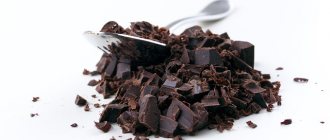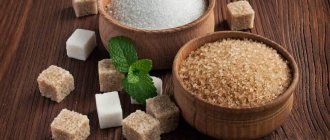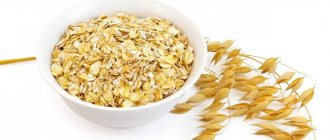Sweeteners are becoming very popular. Avoidance of beet and cane sugar is promoted in the media, causing people to spend large sums on expensive supplements. People first started talking about a sweetener during the First World War, when natural products were in short supply. A little later, it began to be used by those who wanted to maintain their own weight and eat right.
The sugar substitute was an accidental invention of a Russian chemist. During lunch, Fahlberg noticed the sweet taste of the bread. However, it differed among different varieties. It turned out that it was not the flour product that was sweet, but the chemist’s fingers. This is how sulfamine benzoic acid was identified. A little later, a chemist synthesized saccharin from it.
The benefits of natural sweeteners
There are practically no contraindications to their use. Such substances can be consumed by people with diabetes. They contain few calories, so can be used for those who want to maintain their weight.
The most popular are:
- fructose;
- sorbitol;
- xylitol;
- stevia.
Fructose is allowed for diabetics: due to its high sweetness it allows you to reduce sugar consumption (but it is also high in calories). Sorbitol is found in mountain ash and apricots: with its help you can improve the functioning of the gastrointestinal tract and retain beneficial substances in the body. Xylitol improves the condition of tooth enamel and speeds up metabolism. Stevia is a natural product that has no energy value and does not affect glucose levels. Due to their very sweet taste, they can satisfy the needs of those with a sweet tooth.
Xylitol is a natural sweetener extracted from corn. Contains 40% fewer calories than regular sugar.
Today, natural sugar substitutes are also actively promoted. One of their representatives is yacon syrup. The roots of the plant have a sweet taste. The main part of carbohydrates consists of inulin and oligosaccharides. The syrup has a low glycemic index and does not increase blood sugar levels. The carbohydrates contained in it are slowly absorbed and serve as food for beneficial bacteria.
Agave syrup is popular in America. It is 90% fructose. It is made from fleshy leaves, from which sweet juice is extracted.
Which sweetener is better
There are a huge variety of sweetener substitutes!
For example:
- Fructose.
- Sukanat.
- Syrup.
- Polyhydric alcohols.
- Sorbitol.
- Xylitol.
- Maltitol.
- Erythritol.
And also those that are considered sweeteners:
- Saccharin.
- Aspartame.
- Cyclamate.
- Stevioside (stevia extract).
- Lactulose.
- Sucralose.
- Thaumatin.
- Glycyrrhizin.
- Neohesperidin
- Acesulfame-K.
- Neotame.
- Alitam (E956).
What is the difference between sweeteners and sweeteners?
Because sweeteners are CALORIC (have energy value), and sweeteners are NON-CALORIC.
Sweeteners do not take part in metabolism and their calorie content is 0 kcal.
The US Food and Drug Administration (US-FDA) has approved six sweeteners for human use and classified them as Generally Recognized as Safe (GRAS), namely:
- Saccharin.
- Aspartame.
- Sucralose.
- Neotame.
- Acesulfame-K
- Stevioside.
There are two other widely used agents (sweeteners):
- Alitam (approved for use in South America, China and Australia).
- Cyclamate (approved in more than 50 countries, excluding the USA).
It is these eight sweeteners that are found in various studies and are recommended for consumption.
It must be said that the use of sweeteners is an excellent solution for a person who watches his diet and figure, but this is not a reason to binge on these sweet sugar substitutes, because It must be taken into account that their sweetness is much higher than that of sugar.
Some studies suggest that diabetics should use sweeteners, and especially sweeteners, in minimal quantities, because Long term use may be harmful, here are the links:
- “Artificial sweeteners cause glucose intolerance by altering the gut microbiota.” 2014, Suez J., Korem T., Zeevi D. et al.
- "Sugar Substitutes Linked to Obesity." 2014 Abbott A.
Harm of natural sweeteners
Most of them contain a lot of fructose. It has been proven that in large quantities it slows down the most important processes in the brain and negatively affects memory and information analysis.
Some types of sweeteners provoke cardiovascular diseases and lead to the accumulation of fat. When sweets enter the body, a signal is sent to the brain that it needs to be ready for a portion of fructose. A reaction begins in the liver and appetite develops. In addition, almost all of the above types can lead to gastrointestinal disorders at high doses.
Nutritionists note that large amounts of fructose lead to toxic hepatitis. Its complications include cirrhosis, carcinoma, and liver failure. Some sweeteners, such as xylitol, cause allergic reactions.
When losing weight: why and is it harmful?
People usually think that using low-calorie sweeteners (such as aspartame, saccharin, stevia, sucralose) instead of sugar helps reduce energy intake and promote weight loss.
Ardent opponents of sweeteners scream that the effect of consuming sweeteners can even be the opposite and lead to excess weight gain: “the brain understands that it is being deceived and tries to make up for lost calories, and even in excess.”
If you believe this, take the trouble to read “ The working principle of insulin ” and all doubts will disappear at once.
The authors of a systematic review published in the International Journal of Obesity examined data from studies in which sweetener consumption in humans and animals occurred without additional manipulation of caloric intake, while food was freely available.
In 62 of 90 animal studies, sweeteners had little effect but still resulted in weight loss . 28 reported an increase in weight in experimental animals.
After conducting thorough meta-analyses of randomized trials, scientists concluded that using sweeteners instead of sugar in children and adults reduces calorie intake and leads to weight loss. REALLY AMAZING.
Of course, it does if sakhzam is lower in calories. So to speak, we do not see a subject for dispute. Of course, replacing habitual sweets with low-calorie sweeteners can help you lose weight or maintain your weight.
For example, someone drinks 2-4 glasses of various sweet drinks a day: soda, tea or coffee with sugar, juices, etc. This is 400-800 ml of drinks with an average calorie content of 40-50 kcal/100 ml, i.e. 150-400 kcal. Getting rid of this amount of calories is enough to start losing weight with fairly noticeable dynamics.
Giving up liquid calories is usually quite painless and does not lead to the need to replace them with some other food. You can switch to water and unsweetened tea/coffee, but if you don’t like to stay without sweet drinks at all, then you can use sweeteners; simple mathematics shows what benefits you will get.
Of course, consumption of sakhzams is optional . Some people don't need this at all. Another may experience increased appetite after certain types of sweeteners. And the third tries to consume sweeteners in some not entirely adequate quantities, as a result he eats and drinks mostly some kind of sweetened drink.
But you generally tolerate a reduction in the amount or refusal of sweets quite well and do not worry about it, so you don’t need to replace sugar in this regard.
Another interesting point. There is such a thing as compliance or tolerability of the diet . From a compliance point of view, consuming non-caloric sugars is a great idea.
Let's say someone is used to eating sweet oatmeal for breakfast and drinking coffee with sugar. From sugar, he can get up to 120 kcal for this breakfast. Let's say we replace this sugar with sucralose/stevia, etc., but leave the set of products unchanged. A person will save up to 120 calories!
As a result, the goal will be achieved in a simpler way and without significant lifestyle changes; the so-called healthy approach, that is, the gradual replacement of products that are not very suitable for maintaining health with more acceptable ones.
It is usually recommended to immediately switch to a diet of grains, lean proteins , fruits and vegetables, and include about 10% of calories from sweets and usual treats.
But in practice, the diet often turns into a series of baked goods with sugar and protein with fiber. This doesn't quite meet the goal of staying healthy.
The only point I would like to draw your attention to. If you are trying to get rid of sugar addiction, then consuming saxam can hardly be considered a successful strategy. After all, you continue to feed your brain with what it craves—sweets.
Sugar addiction is in your head and that's a fact. Whether it has an exclusively psychological or physical basis is not so important. The main thing is that giving up sugar is a difficult and difficult task for an incredibly large number of people.
One very important point is not clear: do sugars stimulate the same areas in the brain “reward system” as sugar? We looked for information and found nothing concrete. Apparently not. It's a pity, because this is the most important issue. Anyway.
In any case, purely psychologically this does not help solve the problem . You don’t give up your love for sugar - you simply replace it with your love for sakhzam.
Say goodbye to sweets or how to give up sugar
Remember that sweeteners were originally created as an alternative to regular sugar for diabetics or a cheap sweetener during sugar shortages (some of them came into use during the First World War, when regular sugar was sorely in short supply). Therefore, they must meet two requirements - have a sweet taste and not increase blood sugar. They have absolutely indirect relation to your weight loss.
The benefits of artificial sweeteners
The positive properties include a minimal amount of calories. This type is recommended for consumption by people who are on a diet but cannot give up sweets. Available in convenient tablet or dragee form. One element is enough to make a cup of water sweet.
The only safe sugar substitutes are stevia (this is a natural product) and sucralose, which is 500 times sweeter than sugar and has no calorie content. It is often used by athletes and added to diet. But sucralose has a drawback - it is expensive.
Harm of artificial substitutes
They do much more harm than good. Aspartame, for example, is hundreds of times sweeter than sugar, and is one of the most popular. Recent studies have proven the toxic properties of the substance. A long reception can become a provocateur:
- headaches;
- allergies;
- depression;
- liver pathologies.
Taking the drug by patients suffering from excess body weight can lead to the opposite effect due to an increase in hunger.
Saccharin is added to many industrially processed foods. Combined with sugar, it causes the rapid development of hyperglycemia. When used more than 5 mg per kilogram of weight, it has a pathogenic effect on the body. Some scientists are inclined to assume that saccharin is a prerequisite for the development of cancer. WHO says that this theory is not proven.
Disadvantages include:
- metallic taste;
- presence of carcinogens;
- the ability to cause exacerbations of gallstone disease.
If you can’t give up saccharin, you should consume it after carbohydrate foods. This reduces the risk of harm to the body.
The latest popular artificial sweetener is cyclamate. This is a very toxic substance and is prohibited for children and pregnant women. Causes complications in patients suffering from diabetes. Increasing the dosage and prolonged use of the substance causes the development of cancer.
Which is better and most harmless: harm or benefit?
There are 2 large groups of sweeteners: natural or plant-based and artificial (synthetic) . The former are made from natural raw materials (from fruits and berries), the latter are obtained synthetically.
Sweeteners are actively used in the food, confectionery and medical industries for addition to flour products, desserts, drinks and medicines. For self-use, supplements are available in the form of dragees and tablets.
It is important to understand that even if you are against such additives, you are eating sweeteners anyway!
The situation is the same as with soybeans . Even if you are not familiar with sweeteners and have never bought them, this does not mean that you do not use them. Illogical, but true. They are added to various products for several purposes:
- to make it sweet
- to write “sugar free”, “0% sugar” and some seductive “sugar free” on the label and sell it at a higher price.
Today, many quite ordinary products are usually advertised as the healthiest. Take pre-made granola bars . Basically, you eat something like a Snickers.
At the same time, the entire package is filled with joyful exclamations: Low fat! Good for the heart! Rich in fiber! Gluten free! Reduced salt content! Made with whole grains! Turn the bar over and read the list of ingredients: sugar, flour, sugar in a different form, sugar in a different color, sugar with an interesting name, etc.
To determine whether a product contains a sweetener, you need to know what E code it is labeled with and carefully study the composition on the label.
Natural
Natural sugar substitutes are considered healthier and safer. Natural supplements include:
Xylitol (E967)
It is used to make drinks and chewing gum. Calorie content: 367 kcal. Proteins and fats: 0.0 gr. Carbohydrates: 97.9 g. The calorie content of xylitol is almost the same as that of sugar, so there is no point in using it as a substitute for weight loss .
It is also important to know that the absorption of xylitol occurs without the participation of insulin, so xylitol is used as a sugar substitute for diabetics . A couple more interesting facts:
- Xylitol has strong bactericidal properties. If you pour a xylitol solution over the meat, its freshness will last for about 2 weeks at a temperature of 0–5 ºС.
- Xylitol also perfectly stabilizes dietary fats and increases the shelf life of milk concentrates.
- When used in the manufacture of sausages, it improves their taste and color.
- It is widely used in the production of sugar-free chewing gum, and has a positive effect on tooth enamel (harmful microorganisms are not able to absorb xylitol, and, therefore, cannot reproduce).
- In the production of ice cream, xylitol is used as a strong emulsifier, which significantly improves the quality and taste of the final product. Almost all sweet food products are made with the addition of xylitol.
- When consuming xylitol, it is important to follow the norm, otherwise you may get an unintended effect: 20 g. xylitol acts as a choleretic agent , and at a dose of 40-50 g. xylitol can act as a laxative .
- Dangerous for dogs! So if you have any four-legged animals living in your house, make sure that the drug does not get into their food!
You can buy xylitol in grocery stores, for example, in Auchan or pharmacies, as well as online stores, the price starts from 150 rubles.
Sorbitol (E420)
This sakhzam is obtained from sorbitol and stone fruits. Quite high in calories, almost like sugar: per 100 grams. contains 354.4 kcal. and 88.6 gr. carbohydrates, so there is little point in replacing sugar with them. Sorbitol, like xylitol, is also used as a natural preservative and emulsifier.
Sorbitol is a white substance consisting of solid, highly water-soluble crystals that are slightly larger in size than sugar. Sorbitol is made from corn, potato or wheat starch. It has a sweet taste, reminiscent of sucrose, but without a pleasant aftertaste. In terms of sweetness, sorbitol is 45% inferior to sugar, so to ensure the usual sweetness you will need more of it than simple sugar .
This sweetener is presented on the market under the names: “Sorbitol”, “Food Sorbitol”, “Sorbitol”, Sorbitol, Sorbit. It is found in liquid and powder form, and is also included in sweetener mixtures. Cost from 100 rubles, sold more often in pharmacies.
Over many years of use, the substance has been carefully studied and researched: sorbitol is non-toxic, has a low glycemic index, is almost completely absorbed by the body (98%), has a laxative effect and a choleretic effect, is used for diseases of the kidneys and bladder, improves digestion, enhances the production of gastric juice
In large doses ( more than 30 grams at a time ), sorbitol causes stomach upset.
Sorbitol is resistant to heat treatment, which allows it to be used in the preparation of hot dishes and drinks.
Isomalt (isomaltitol, maltitol) (E953)
T.N. A new generation supplement that has probiotic properties.
It occurs naturally in sugar beets, sugar cane and honey, from which it is isolated. Hmmm, it’s unclear why honey and beets should be ostracized, and then isolate isomalt from it and scream that it’s healthy and promotes weight loss, but oh well.
The calorie content of maltitol is 240 kcal per 100 g, in contrast to sugar, whose calorie content is 400 kcal. However, it is worth considering that to obtain a sweet effect you need more of it than sugar ( sugar is 2 times sweeter ). Therefore, in the end, the body will receive almost the same amount of calories as when consuming sugar.
Isomalt does not contribute to the growth of bacteria in the oral cavity. It is also a prebiotic. Like plant fiber, isomalt works as a ballast substance, thereby prolonging the feeling of fullness. However, as with fiber, you should be careful with it .
Those. Sweetener suppresses appetite because the human body perceives it as fiber, unlike regular sugar, which is recognized in our body as a carbohydrate.
Isomalt is recognized as safe, but it should still be used with reservations. The scientific journal British Journal of Nutrition published the results of studies on the effects of isomalt on digestion. It turned out that the substance is well tolerated by the body, improves intestinal function and can be used to improve health. However, increased intestinal motility can cause diarrhea and flatulence with uncontrolled use of this supplement.
Stevia
So, let's discuss the benefits and harms of stevia. South American tree extract is the safest substitute, although the taste is slightly inferior to other additives. Calories per 100 g: 272. Proteins and fats: 0. Carbohydrates: 68 g.
Not 0 calories, as the advertisement says, but quite a strong 272. However, stevia has a tricky property: stevia extract is almost 125 times sweeter than regular sugar , so one small tablet is enough to sweeten your whole life and you are unlikely to eat even 20 grams . So the calorie content will really be almost zero.
The numbers are approximately: 1 tablet = 1 tsp. Sahara. Weight of 1 tablet is 0.25 grams, calorie content is 0.7 kcal.
The main difference from regular refined sugar is that stevia does not have a glucose group in its chemical structure, and therefore does not lead to a sharp increase in blood glucose.
The sweetness of stevia comes from glycosides—essential sugars of organic origin. Some compounds are extremely bitter, while others are very sweet. Stevia leaves accumulate glycosides of 11 types, which have a sweet taste, but with the presence of a bitter note.
Stevia comes in different types:
- Dry. More precisely, we are talking about products of deep processing of raw materials. These are crystalline, powdery substances with a high percentage of steviol. Stevia REB 97A powder, consisting of 97% rebaudoside A, is considered the purest dry extract.
Extremely, unbearably sweet, used in mass production.
Dry stevia extract is often used in a mixture with other sweeteners - sucralose, sorbitol, fructose. This allows you to maintain the usual dosage and, at the same time, reduce calorie content.
- Liquid . Steviols are highly soluble in water, which allows you to play with the desired sweetness of the solution. To do this, it is enough to mix the active substance with liquid in the required proportion. Liquid stevia is convenient for packaging and practical to use.
- Extract in tablets . This form of release of the drug is convenient for selecting an individual dose. This feature is especially useful for people with diabetes.
- Sachet.
Previously, stevia was suspected of being mutagenic and causing cancer, but after WHO conducted additional research, the complete safety of stevia was proven. As for neoplasms, it turned out that stevioside, as a bioflavonoid and antioxidant, on the contrary, “blocks” the development of cancer cells.
What else do you need to know about stevia? Stevia can be used in baking, hot drinks, etc., because... it does not lose its properties when heated up to 2000 C.
It is also an excellent means for preservation, because... the grass has bactericidal properties. Replacing sucrose in twists and canned foods reduces the risk of product spoilage by mold and other biological pests.
By the way, stevia solution is used to treat festering wounds, cuts, trophic ulcers, and burns. As a result, pain is relieved and healing occurs quickly. The leaf contains tannins that convert proteins of the skin and mucous membranes into solid, insoluble compounds. A barrier is formed against bacteria. This explains the disinfectant properties of this plant. Residents of the tropics actively use an infusion of sugar bush to relieve itching and swelling at the sites of mosquito bites.
Fructose
Made from fruits and berries, the most high-calorie sweetener .
Poor, unhappy, scolded by everyone for not losing weight, fructose. In terms of sweetness, fructose is 70% sweeter than any of the known saccharides and is three times as sweet as glucose. Calorie content 100 gr. fructose – 399 kcal. There is no point in replacing sugar with it, and in general, it’s better to eat fruit .
In the articles “ Is it possible to eat fruit and lose weight? " and " Carbohydrates " we have already discussed why there is no need to be afraid of fructose and the fact that it is stored in the liver.
Enough of this nonsense about insulin and obesity, which is caused by fructose, but not by glucose. This is blatant nonsense. Read and become smarter . Please.
Lesser-known natural sweeteners are citricose (derived from the skin of citrus fruits), erythritol (“melon sugar”), glycyrrhizin (extracted from licorice), monelin and thaumatin (natural protein sweeteners). Some are not common because their production is quite expensive, and the effect has not been fully studied.
Artificial (synthetic)
Aspartame (E951)
The most popular and inexpensive substitute. 200 times sweeter than natural sugar . When heated, it loses its sweetness, so it is only suitable for food products that are not subject to heat treatment.
Calorie content 0-4 kcal per 100 grams of product. Aspartame is often sold in tablet form under the names Slastilin, Sweetly, Sugarfree.
The advantage of Aspartame for manufacturers is that saliva cannot wash away E951 completely, leaving a cloying taste in the mouth that you want to drown out. Therefore, when drinking a glass of carbonated sweet drink in the heat, after a couple of minutes a person reaches for a second serving.
To be honest, there are still heated debates about aspartame due to the lack of any concrete evidence. In Russia, the countries of the European Union and the USA, the use of E591 Aspartame is permitted, but it is standardized - no more than 40 mg per kg of weight . So don't overuse it!
Acesulfame (E950)
A controversial supplement with many contraindications. Acesulfame potassium is almost 200 times sweeter than sugar (sucrose), has the same sweetness as aspartame, half the sweetness of saccharin and a quarter of sucralose.
E950 has a bitter taste and a metallic aftertaste, so it is usually added to products in combination with sucralose and aspartame, achieving an almost natural sugar taste.
There is no final decision from doctors about whether Acesulfame potassium is harmful or beneficial; it has only been proven that the substance is not absorbed by the body and is excreted through the kidneys quickly enough. Acesulfame potassium is also included in most complex sweeteners: Eurosvit, Slamix, Aspasvit and others.
Acesulfame is added to: toothpaste; medicines; chewing gum; dairy products; confectionery; juices; carbonated drinks. Why put it there if it hasn't been proven safe?
Well, because 1) the opposite has not been proven and 2) (more importantly) because its sweetness is felt instantly and the structure and properties of the food additive do not change during heat treatment .
15 mg/kg of body weight per day .
Saccharin (E954)
The most questioned, but very popular sugar substitute
.
Saccharin has long been known: its industrial production began back in 1884. It was first used as an antiseptic and preservative, and later began to be sold as a sweetener. The sweetness of saccharin is 300 times greater than sucrose , but at concentrations above 0.1% its taste is perceived as bitter, and at lower concentrations it gives off a metallic taste.
In the 1960s, there were reports that saccharin was a carcinogen, and studies in 1977 showed an increased incidence of bladder cancer among laboratory rats fed high doses of saccharin. The American FDA proposed banning the use of saccharin in the food industry, as Canada and the USSR did. However, instead of banning it, the US Congress required that all products containing saccharin carry a cancer warning on the packaging.
Later it turned out that saccharin caused bladder cancer in rats. BUT: the dose they were given was approximately equal to their own weight (i.e. 1000 times the permissible daily allowance ). As a result, the FDA withdrew its proposal to ban saccharin in 1991, and Congress later repealed the law requiring health labels on packages.
Today, saccharin is approved by the Joint Expert Commission on Food Additives (JECFA) of the World Health Organization and the Scientific Committee on Food of the European Union, and is permitted in more than 90 countries.
Saccharin is allowed for consumption in an amount of 5 mg per 1 kg of adult weight, which is about 3 tablets. Sodium saccharin is heat-stable, meaning that when desserts are cooked in the oven, their sweetness will remain the same. However, it is poorly soluble in water.
Sucralose
The sweetest product (600 times sweeter than sugar). Calorie content per 100 g: 268. Proteins and fats: 0.1-0.2. Carbohydrates: 57 gr.
Those who like to eat everything natural in all situations may be disappointed, but sucralose is a product of the chemical industry. It is obtained by replacing atoms in a sugar molecule with chlorine atoms. The process is called “sugar chlorination.” It sounds so-so, but ok.
Sucralose is 600 times sweeter than regular sugar , so you need less of it. Sucralose, unlike aspartame and cyclamate, does not have a characteristic “flat” taste and bitterness. It almost completely “copies” sugar in its taste and therefore is very popular among those losing weight.
Sucralose improves the palatability of other, cheaper sweeteners . Therefore, in sports nutrition products and various healthy lifestyle desserts, it is often used “in pairs” with other substances.
In the conventional food industry, sucralose is also used. It has preservative qualities and allows you to keep baked goods fresh longer.
Cyclamate (E952)
Most suitable for drinks.
The permissible daily dose is 11 mg/kg of adult weight - a maximum of 0.8 g per day. Cyclamate is 30-50 times sweeter than sugar . Sodium cyclamate is added to drinks and consumed in its “pure” form.
Like all synthetic sweeteners, the additive is excreted from the body and not absorbed. Has almost zero calorie content.
Is this sugar harmful? It seems to have no proven side effects, but it is alarming that it is banned for use in the European Union and America. Permitted in Russia.
Bottom line
As you can see, the calorie content of natural sweeteners is almost the same (and some are higher) than sugar. Therefore, there is no point in replacing one with the other (only if it is stevia). The only difference is that they do not cause a sharp release of insulin into the blood, unlike refined sugar, but if you are not diabetic, this should be a side effect for you.
Synthetic sweeteners are not absorbed by the body and have zero calories, but they have a strange history shrouded in mystery. Since it has not been officially confirmed that they can cause significant harm at the permitted dosage, you should not be afraid of them. However, still carefully monitor the amount of their use.
The benefits and harms of sweeteners when losing weight
Many people switch to sweeteners when losing weight. However, artificial species can have the opposite effect. Modern types contain a large number of calories, this fact must be taken into account when choosing.
None of the known sugar substitutes promote significant weight loss. But such substances help make the diet easier and keep a diabetic patient from relapse.
In Germany in 1988, an experiment was conducted: subjects were given a glass of water with a dissolved sweetener to drink on an empty stomach. Sugar concentration was measured before and after drinking water. Scientists have found that blood sugar levels have decreased, which confirms the effect of substances on the functioning of the pancreas, causing an acceleration of insulin synthesis.
Things get even worse if artificial or natural substances are added to the porridge to replace sugar. For example, oatmeal contains complex carbohydrates, which do not slow down your weight loss process. But when it is combined with a sweetener, the body reacts to the second substance. Complex carbohydrates are replaced with simple ones. Less harm will occur if you use substitutes for tea or other drinks.
One feature of such products is the absence of glucose. Taste buds recognize sweetness, but the cells do not receive the long-awaited energy. This leads to a sharp disruption in metabolism. The next time glucose is supplied, the body will not “believe” the sweet taste and will convert the substance into fat, which will lead to weight gain.
Scientists: sweeteners are a deception of the body that can shorten your life
Stevia tablets are one of the popular types of sugar substitute.
Photo: GLOBAL LOOK PRESS
A German-French team of scientists analyzed the results of more than five dozen studies on the effect of sweeteners on the human body. And they have two news for us. The good news is that sweeteners, according to recent data, do not increase the risk of cancer. And there is also no convincing evidence that these substances directly harm the heart and blood vessels. The second news is that sugar substitutes, alas, do not actually justify their purpose. That is, in most of the cases studied, they do not help normalize blood sugar levels and lose excess weight.
Anti-aging medicine experts also have a message to share. “Researchers still disagree about the dangers of sweeteners; they do not say unequivocally that they are evil. But let's take a closer look at what happens in the body when, instead of glucose, a pacifier enters the bloodstream - with virtually no calories, it gives a feeling of sweet taste. If you rely on sweeteners often and in large quantities, it can backfire. And there are already studies showing not theoretically, but actually possible harm from sweeteners,” warns specialist in applied biomedical technologies, aging researcher, vice-president of the Science for Life Extension Foundation Yuri Deigin . We discussed how sugar is now being replaced and what this may lead to in the “Living Maximum” program on radio “KP”.
Cheat to get pleasure
- Sweeteners activate our taste buds - those responsible for sweet taste. And we feel with pleasure that we have eaten something sweet,” explains Yuri Deigin. “At the same time, it was believed that sweeteners, unlike sugar, do not act on insulin receptors. Simply put, they do not give a signal that our pancreas needs to produce the hormone insulin to absorb the sugar that enters the body. It turns out that the benefit is that sweeteners, replacing glucose to our taste, do not bring calories, do not increase blood sugar levels and do not require the production of insulin. Or rather, it was supposed to be so.
— So the inventors of sugar substitutes wanted to cheat, to deceive our body? In order for us to feel the sweetness in our mouth, the pancreas may have gotten ready to secrete insulin, but then - once again, there is nothing. It’s hard to imagine that such a deception, like any other, wouldn’t backfire in the end...
“Apparently, that’s how it turns out.” Sweeteners as an industry have been around for decades. Therefore, a lot of research has accumulated on how they act on the body. In particular, a lot of research has been done on the health of those who drink sweetened drinks - so-called “0 calorie” drinks with sweeteners. And alarm bells began to ring. It turned out that for some reason, those who drank diet drinks with sweeteners had a higher incidence of diabetes, cardiovascular diseases, and even dementia.
Insulin: and yet it rises
“But it’s not so simple,” the expert continues. — The results of observations of lovers of diet sweetened drinks still cannot be considered 100% confirmation of the harm of sweeteners. It can be assumed that the “0 calorie” bottles were initially more often purchased by people who already had weight problems and an increased susceptibility to diabetes and cardiovascular problems. That’s why they took “diet” drinks. Let me emphasize: this is just an assumption, that is, in any case, you should not forget about the alarm call.
At the same time, another type of research appeared. Not just observing people’s lifestyles, nutrition and actual results, but specifically studying what happens inside the body. What response does the pancreas give to sweeteners compared to consuming glucose? It turned out that in fact there is an insulin response - that is, the production of a hormone in response to “empty” sweeteners! This response, that is, the level of insulin production, is not as high as when glucose is supplied. But it still turns out that sweeteners somehow lead to an effect on the pancreas and increase insulin. How this happens is not yet known for certain. However, the body, it seems, cannot be deceived and nevertheless starts the production of the hormone, counting on the arrival of glucose and adjusting to its processing.
And if insulin rises, but glucose does not come, then this one way or another leads to the development of insulin resistance. That is, reducing the sensitivity of cells to the hormone. As a result, there is a serious precondition for diabetes and accelerated aging of the body.
Maybe honey will help us?
Be that as it may, scientists still have not made a decisive statement about the 100% proven harm of sweeteners. Diplomatically they say there are risks of adverse health effects, but research needs to continue. Doctors advise strictly following the recommendations on the labels: different types of sweeteners indicate the amount that it is advisable not to exceed.
Sweeteners as an industry have been around for decades. Therefore, a lot of research has accumulated on how they act on the body.
Photo: GLOBAL LOOK PRESS
“If you need to reduce the amount of sweets in your diet, then it is better to first try to reduce sugar and sweets, rather than switch to sugar substitutes,” says anti-aging medicine expert Yuri Deigin. — It is still advisable to treat sweeteners with caution. At a minimum, I would advise against regularly consuming sweeteners.
-What about honey? Recently there was news that it contains a very useful component trehalose. In experimental mice, this substance helped dissolve atherosclerotic plaques and rejuvenate blood vessels.
— Honey is almost 80% pure sugar, glucose with fructose. If you want to use honey instead of sugar, in reasonable quantities, please do so. The main thing is not to add honey to your diet, preserving the sugar it contains.
As for trehalose, its molecule consists of two glucose molecules joined by a special bond. When we eat trehalose, it breaks down very quickly and turns into those same two glucose molecules. Scientists observed the magical effects of dissolving plaques in blood vessels in mice when they specifically injected trehalose into the blood vessels. And when they gave mice trehalose by mouth, all the magic disappeared.
Therefore, we should not hope that when we eat trehalose, including in honey, we will get a magical effect. Firstly, it will immediately break down into glucose. And, secondly, honey contains a tiny amount of trehalose - 5 parts per million.
BY THE WAY
Aspartame is not a friend to the brain
A recent study found that regular consumption of the sweetener aspartame can lead to emotional and intellectual problems. Namely: difficulties with learning and memorization are noted, irritability and anxiety increase, headaches and insomnia appear. Scientists explain this by the fact that the use of aspartame, firstly, leads to a decrease in the production of the hormones dopamine and serotonin (they are responsible for good mood, concentration, and pain reduction). And secondly, it leads to an increase in the level of the “stress hormone” cortisol.
TO THE POINT
Is there any benefit from fructose?
In the diet departments of supermarkets you can often find sweets containing fructose. This is a natural substance found in fruits. Maybe it's better to replace sugar with it?
— The industry of manufacturers of fructose and products with it promotes its products, citing the fact that after consuming sugar in people with diabetes, the level of glucose in the blood increases dangerously, and if you eat sweets with fructose, you will not immediately see such a rise. But! Once a little more time has passed, fructose will give no less of a rise than sugar. So “dietary” sweets containing fructose are a real Trojan horse,” Yuri Poteshkin, head of the Scientific and Clinical Center for Endocrinology of the international biomedical project “Atlas”, editor-in-chief of the publishing house “Actual Medicine”, endocrinologist, candidate of medical sciences, told KP.
— What about other sugar substitutes?
— Saccharin and cyclamate are more or less safe in reasonable quantities. But it’s better to keep them to a minimum. Perhaps the most harmless source of sweets today is the stevia plant and products based on it.
It is worth keeping in mind that stevia gives a characteristic “metallic” taste that you need to get used to. It can also have a slight laxative effect.
Komsomolskaya Pravda recommends the e-book “Rules for Quick Weight Loss” from leading doctors and experts on shop.kp.ru
Rules for fast weight loss
16+ JSC Publishing House Komsomolskaya Pravda, Moscow OGRN 1027739295781.
Harm and benefits of sweeteners for diabetes
Failure of the thyroid gland occurs in type 1 and type 2 diabetes. An increase in blood sugar concentration leads to the appearance of various diseases and pathologies. To avoid this, it is recommended to follow a certain diet. It excludes the consumption of foods that provoke glucose surges.
Sweeteners are used to provide a variety of taste sensations. Preference should be given to natural types. They:
- safe;
- provide ideal taste to products;
- have a mild effect on carbohydrate metabolism.
Saccharin is the first sugar substitute for diabetics. Since it has a metallic taste, it is combined with cyclamate. However, this combination leads to an increase in blood glucose levels.
People with type 1 and type 2 diabetes are allowed fructose, but the daily dosage is no more than 50 g. Stevia is more beneficial because it reduces sugar levels in the body and normalizes metabolic processes.
In the absence of concomitant diseases, the following are allowed for use:
- maltose;
- lactose;
- thaumatin;
- monellin.
In some cases, sweeteners cannot be used for diabetes. The restriction applies if there are liver and kidney diseases, gastrointestinal problems, allergic manifestations, or a predisposition to cancer.
Which type is better - erythritol, stevia or sucralose?
Erythritol/erythritol
It is a naturally occurring sweetener found in starchy foods such as corn and grapes. In production it is labeled as additive E968. It is not as sweet as sugar, but there are only 20 calories per 100 grams.
The benefits of erythritol are that it does not cause an insulin response and does not affect carbohydrate metabolism. Also, this sweetener does not disrupt the functions of the gastrointestinal tract. It is rare to experience side effects such as vomiting or diarrhea. Safe daily dose: up to 1 gram per 1 kg of weight, one-time no more than 35 grams.
You can add it to baked goods, hot and cold drinks, cocktails and desserts. The scope of application is universal. Most often sold in powder form, it is easy to find in stores, especially specialized ones.
Stevia
Considered the safest sugar substitute. It is of natural origin, extracted from stevia leaves. The name of the additive is E960. It tastes slightly herbaceous, but is 250 times sweeter than sugar. Therefore, the daily dose should not exceed 4 mg per 1 kg of weight. Calorie content per 100 grams is 18 kcal.
Stevia has its benefits. For example, it does not cause a spike in blood glucose. Stevia also normalizes blood pressure, cholesterol levels, and removes toxins from the body. Experts do not note any side effects or negative effects on the body from this sweetener.
The only downside is that an overdose can cause upset or digestive problems. Stevia can be consumed not only for weight loss, but also for type 1 and type 2 diabetes, hypertension, atherosclerosis, and heart disease.
You can add it to almost any dish and drink. If you buy stevia in the form of dry leaves, you can make tea from it.
Sucralose
Unlike the two previous types of sweetener, this one is artificial. Speaking in terms, it is a chlorine derivative of galactosucrose. The name of the additive is E955.
This substitute is as sweet as possible, 600 times higher than sugar. There are zero calories, but you can consume a maximum of 10 mg per 1 kg of weight daily.
It can be added to the diet when losing weight, it is quite harmless, but causes appetite. It can be used even by children and pregnant women. Suitable for baking, desserts, syrups, jams and hot drinks. Does not change or worsen the taste of dishes. Buyers and experts note a couple of disadvantages - the high price tag, and also the fact that sucralose can have a strong laxative effect when consumed in large quantities.
Sweeteners during pregnancy
As in the above cases, during pregnancy you should completely avoid artificial sweeteners. It is better to focus on sucrose, honey, fructose, dexatrose, and corn sweetener. These substances are prohibited if you have diabetes mellitus in pregnancy.
Acesulfame potassium can be taken in small quantities. Some doctors also allow Aspartame. It can be seen in syrups, jelly desserts and yoghurts. The substance is also safe during breastfeeding. Sucralose is also not prohibited. It is used instead of regular table sugar.
Cyclamate and saccharin will harm mother and baby. The first is prohibited for use due to the possibility of causing cancer, the second penetrates the placental barrier and causes irreparable harm to the fetus.
There are many questions regarding stevia. Despite its natural origin, it has not received approval from the medical community. Therefore, it is not recommended for use during pregnancy.
Fructose Vitamin
Fructose, or fruit sugar as it is more commonly called, is the most popular sweetener. It is on the shelves of almost every store, and the price of such a sweetener is not bad. In nature, fructose is found mostly in fruits and honey. This component is also used in the production of wine, carbonated drinks, juices, baked goods, and chewing gum.
In terms of calorie content, fructose is not inferior to sugar, but due to the fact that fructose is much sweeter than regular sugar, less of it is required for cooking. Consequently, the calorie content of the dish is reduced due to the fact that the amount of sugar is reduced. But fructose has a low glycemic index, which does not lead to sugar spikes. Therefore, fructose can be consumed by people suffering from diabetes.
The sugars contained in fructose protect teeth from caries, help fight stress and drowsiness, and tone the body. Vitamin is one of the best pure fructose options. This company's package contains 500 grams of fructose, which means one such package can replace 1200 grams of sugar. This fructose looks a little finer than sugar, and its shelf life is 2 years.
Despite the fact that it is now very easy to replace refined sugar with a healthier alternative, it is impossible to completely give up sugar. The fact is that many foods contain hidden sugar. Even at first glance, foods that are not at all sweet can contain a large amount of glucose in their composition.
Author: Elena Staretskaya specially for the Chocolate.Today website
How to choose a sweetener so as not to cause harm to the body?
In Russia, the use of sweeteners is not as popular as in other countries. You can buy them in almost any large stores and pharmacies. The easiest way is to find an artificial one. Nutritionists say that it is worth giving preference to the products of those companies that specialize in dietary nutrition.
Many additives allowed in our country are prohibited in Europe and America. Before purchasing, you should study the lists and choose the variety that is considered safe in most countries. You can use as much substitute as indicated on the package.
Thus, it is imperative to replace sugar with an additive if this is prescribed by the attending physician. If you wish, you can choose the appropriate type if you want to give up sweets or lose excess weight through a diet. It is not recommended to replace if you have thyroid or kidney disease without consulting a doctor.
3 dinners for two with free delivery for RUB 1,990.
View menu











